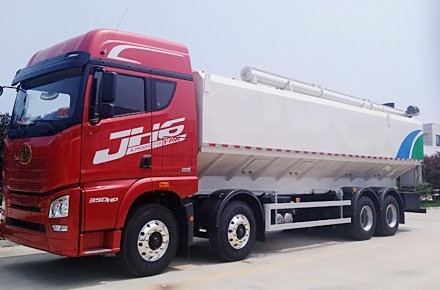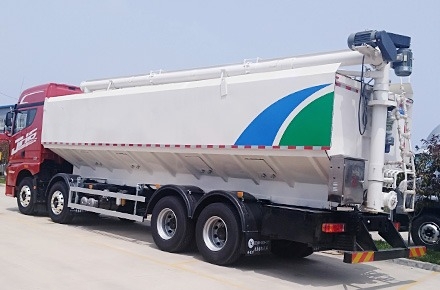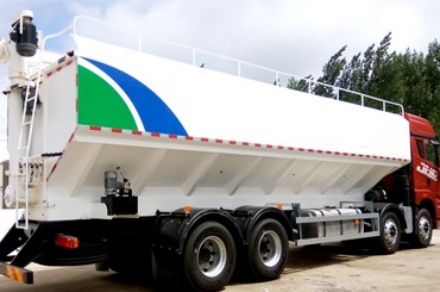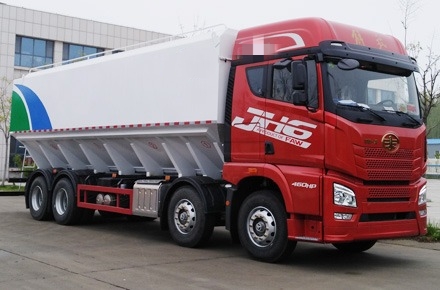Pneumatic tankers play a crucial role in the transportation of dry bulk materials, such as cement, flour, sand, fly ash, and plastic pellets. These specialized vehicles use compressed air to discharge their cargo efficiently, eliminating the need for manual unloading. One of the most common questions about pneumatic tankers is their size. Understanding their dimensions and capacities is essential for selecting the right tanker for specific applications.
Types of Pneumatic Tankers Based on Size
Pneumatic tankers come in various sizes, depending on their intended use, load capacity, and the transportation regulations of different regions. Their size is primarily determined by the volume they can carry, typically measured in cubic meters (m³) or cubic feet (ft³). The 3 main categories of pneumatic tankers based on size are:
1. Small Pneumatic Tankers (10-25 m³)
Small pneumatic tankers are typically used for local deliveries and specialized applications requiring limited loads. They are ideal for maneuvering in urban areas where space is constrained.
Specifications:
- Capacity: 10 to 25 cubic meters (353 to 883 cubic feet)
- Length: 6 to 9 meters (20 to 30 feet)
- Weight: 5 to 12 tons (empty weight)
- Axles: 2 to 3 axles
- Common Applications: Transporting small quantities of cement, flour, or chemicals to construction sites and manufacturing plants
2. Medium-Sized Pneumatic Tankers (26-45 m³)
Medium-sized pneumatic tankers are widely used for regional and national deliveries. They offer a balance between load capacity and ease of maneuverability, making them suitable for most bulk material transport needs.
Specifications:
- Capacity: 26 to 45 cubic meters (918 to 1,589 cubic feet)
- Length: 10 to 12 meters (33 to 40 feet)
- Weight: 12 to 25 tons (empty weight)
- Axles: 3 to 4 axles
- Common Applications: Transporting cement, fly ash, flour, plastic granules, and sand over medium distances
3. Large Pneumatic Tankers (46-80 m³)
Large pneumatic tankers are designed for long-distance transportation and high-volume deliveries. These tankers are commonly used in large-scale industrial operations, including cement production, power plants, and chemical industries.
Specifications:
- Capacity: 46 to 80 cubic meters (1,624 to 2,825 cubic feet)
- Length: 12 to 15 meters (40 to 50 feet)
- Weight: 25 to 40 tons (empty weight)
- Axles: 4 to 6 axles
- Common Applications: Bulk transport of dry materials such as cement, lime powder, sugar, and industrial powders

Key Factors Affecting Pneumatic Tanker Size
Several factors determine the size of a pneumatic tanker, influencing its selection for specific transportation needs.
1. Regulatory Limitations
Government regulations on truck sizes and weight limits vary by country and region. For instance, in the United States, the maximum legal weight for trucks is 80,000 lbs (36,287 kg) without special permits. In Europe, regulations also impose axle load limits that influence tanker size and capacity.
2. Material Density
The density of the transported material affects the required tanker size. Heavier materials, such as cement and sand, require smaller-volume tanks to stay within legal weight limits, whereas lighter materials like plastic pellets can be transported in larger-capacity tanks.
3. Unloading System Efficiency
Pneumatic tankers rely on pressurized air for unloading. Larger tankers require more powerful air compressors to ensure efficient discharge of materials. The unloading system’s efficiency must align with the tanker’s size to optimize operations.
4. Transport Distance
Long-haul transportation favors larger tankers to reduce costs per ton transported. However, for short-distance deliveries, smaller tankers may be more practical due to easier maneuverability and faster turnaround times.
5. Road and Infrastructure Conditions
Larger pneumatic tankers are better suited for highways and major roads, whereas smaller tankers may be necessary for deliveries in urban areas or sites with tight access restrictions.
Design Variations Based on Size
Pneumatic tankers are designed with different structural features depending on their size and purpose. Some common design variations include:
1. Trailer Type
- Straight-body tankers: Used in smaller trucks for short-distance transport.
- Semi-trailer tankers: Common in medium and large tankers for long-haul transportation.
- B-train tankers: Consist of 2 trailers for maximizing load capacity.
2. Tank Shape
- Round Tanks: More common in larger tankers due to structural strength and easier material flow.
- Elliptical Tanks: Often used for medium-sized tankers to optimize space and stability.
- V-Shaped Tanks: Designed for easier material discharge and self-cleaning properties.
3. Compartments
Some large pneumatic tankers feature multiple compartments to transport different materials simultaneously, allowing for greater operational flexibility.

Choosing the Right Pneumatic Tanker Size
Selecting the appropriate size of a pneumatic tanker depends on several key considerations:
- Cargo Type: Understanding the density and flow characteristics of the material is critical.
- Volume and Weight Restrictions: Ensuring the tanker meets legal load limits for specific routes.
- Operational Costs: Balancing fuel consumption, maintenance, and transportation efficiency.
- Delivery Frequency: Optimizing between fewer large deliveries versus frequent smaller ones.
- Unloading Infrastructure: Ensuring compatibility with unloading sites and available equipment.
Conclusion
Pneumatic tankers come in various sizes to accommodate different transport needs, ranging from small local delivery tankers (10-25 m³) to large-capacity haulers (46-80 m³) used in industrial applications. The right tanker size depends on material properties, transportation regulations, and operational efficiency. Understanding these factors helps in making informed decisions when selecting the best pneumatic tanker for a given application.


